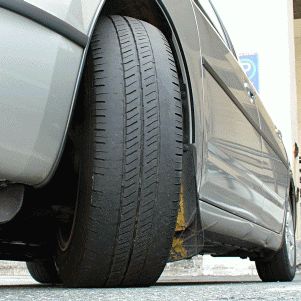Originally Posted By: Saturn_Fan
Originally Posted By: firemachine69
Originally Posted By: Drew99GT
I'd think a light car with too much air pressure would murder the tread in the center of the tire. More weight would flatten/even out the contact patch of the tire on the road.
I wore out a set of tires on my Grand Am in about 10,000 miles by running 44 psi (sidewall max). The center was bald.
Regardless, take it back to Toyota. The tires are under warranty.
I will, but I've been given the shaft on warranty work. They'll do anything to get out of warranty work. How many quarts does someone on BITOG wanna gamble they'll tell me tires are "consumables" and not covered under warranty?
What kind of warranty work have you already had on a Yaris with 6k? I thought the Yaris were a pretty reliable vehicle???
Check engine light came on. Excess emissions.
Fuel dilution (resulting in por gas mileage, although dealer refuses to acknowledge a problem exists).
Body trim broke off.
I'm already clunking in the front of the suspension. Appointment scheduled.
Rattles a bit everywhere. Dealer refuses to fix or says problem doesn't exist.
Expensive bodywork due to mis-aligned fender/door sliding into each other over time (about six months), rubbing paint and denting each other.
Tires that are ridiculuosly worn prematurely (alignment and tires aren't covered, so I've learned).
As I've noted elsewhere, I get burnt once, but not twice. Never will I purchase a new Toyota again.
rpn453:
As all Yaris owners know, the electric servo motor powering the steering is a bit "primitive", and makes steering rather sloppy. It's hard to tell at highway speeds if it's sloppiness or a true "pull".







